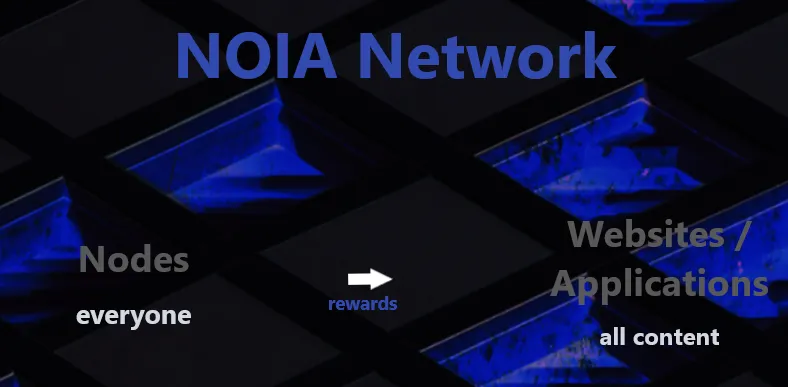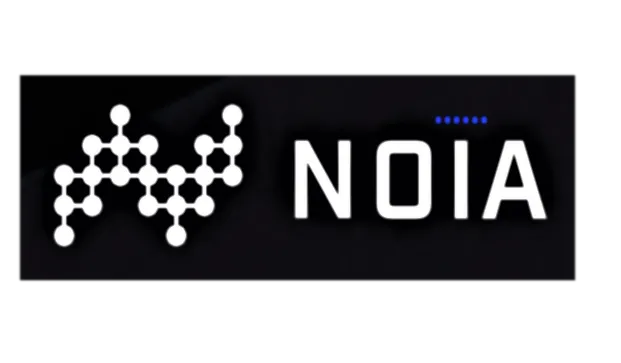
Purpose: To briefly overview the NOIA Network while posing questions about its decentralized approach toward utilizing spare bandwidth over a smart payment gateway. Additional investigation follows the briefing.
Here is a list of questions presented throughout this article that explores how the NOIA Network will help create a new, better digital ecosystem:

- In what ways does making rewards fundamental to CD impact the digital ecosystem?
- Active Disruption: How might other innovative projects respond to NOIA’s plan to actively facilitate solutions while having the power to disrupt the CDN market?
- In what specific ways can NOIA Network bring order to the CDN market?
- Consider how CDNs are being driven by DevOps. Explain the role of NOIA's blockchain innovation for the future of CDN development.
- Consider why the current CDN market is characteristically chaotic. How does NOIA’s blockchain solution fit into CD innovation for the future?

Examination of NOIA Network
Introducing the NOIA Network
NOIA Network takes part in the blockchain revolution by creating a decentralized shared economy. This much needed networking innovation focuses on solving internet infrastructure problems by providing a better content delivery network (CDN).
A Next-Generation CDN and Token Economy
NOIA Network is the next generation of content delivery (CD) innovation. It is a peer-to-peer (P2P) solution that can make use of the computers of the world to optimize the delivery of all web content. Blockchain technology is applied to file sharing and artificial intelligence (AI) to develop a single P2P global intranet.


In what ways does making rewards fundamental to content delivery impact the digital ecosystem?

Conventional CDNs use POPs as centralized data centers; whereas, NOIA Network uses the growing number of everyday devices to form a new decentralize POPs network. This allows individuals to profit off of unused resources while simultaneous cutting cost of business around the world. NOIA is a better economic model and more efficient solution. It is autonomous, decentralized, and highly scalable. The ultimate goal is to grow the network so large so as to be entirely self-sustained. This would lead to optimal sharing within a fairly governed ecosystem.
Plans for Complete Decentralization
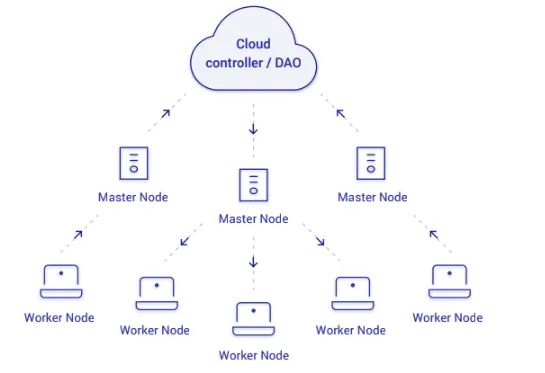
A Single, Adaptable CDN Solution
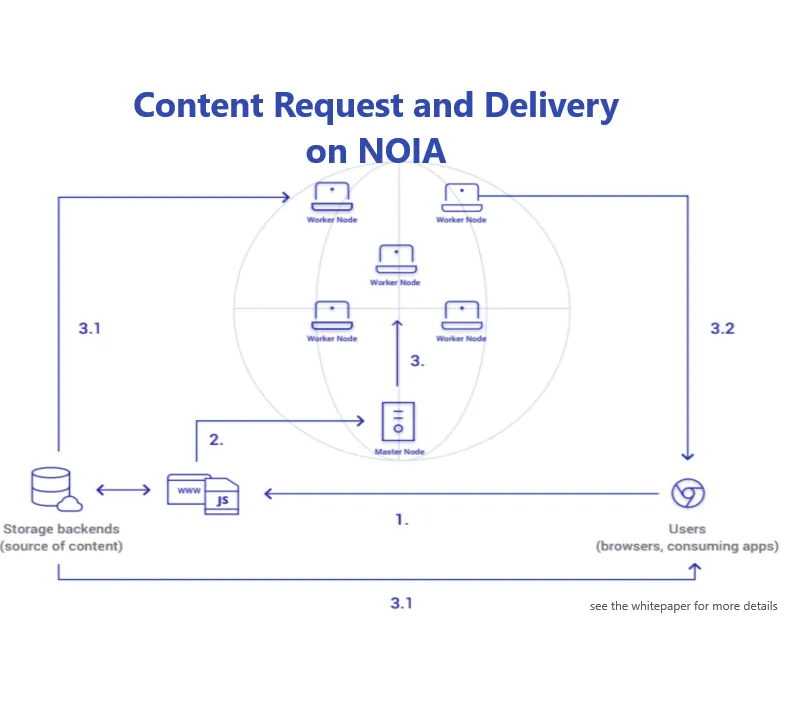
This implementation method puts NOIA Network at the center of an evolving CDN ecosystem as a bridge between decentralized and centralized content hosting. Furthermore, it offers complete global accesses to hosted content with unlimited applicability. This last point is a major issue, in terms of complexity and cost, for current centralized options. The advantages of NOIA's technology is pairing flexibility with a better predictive traffic and data storage model.

Active Disruption: How might other innovative projects respond to NOIA’s plan to actively facilitate solutions while having the power to disrupt the CDN market?

Framework and Governance
NOIA Network employs two intertwined primary layers:
- a Content Scaling Layer (CSL) that provides the framework
- and a smart contract driven governance layer for distributing value
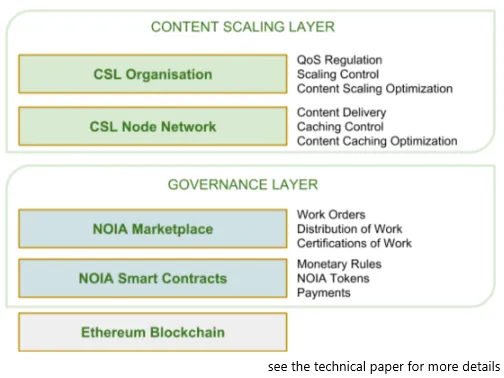
Content storage times are optimized to maximize bandwidth resources. This has advantages for scaling, dynamic content distribution, and makes it highly adaptable to traffic.
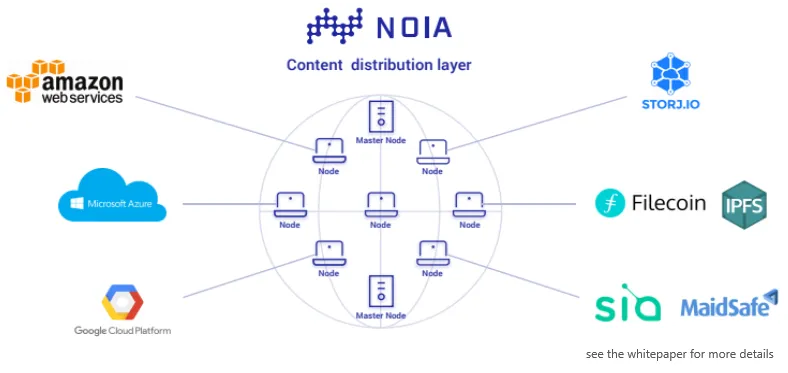
Machine Learning for Local CD
AI is integral to NOIA Network. Machine learning (ML) is applied to traffic prediction for caching content, unlimited scaling through POPs, efficiency, speed, optimized routing, forecasting demand, and allows for payments specific to successful deliveries.
ML improves efficiency by replacing international networks with local content delivery. Demand factors play a big role in this local internet infrastructure approach. This is of great benefit for reaching and equalizing internet infrastructure across all regions of the world.
NOIA provides the ultimate solution for expensive data transfer. Data host costs are significantly reduced through the use of ML. It optimized processes using a decentralized P2P network while relieving the areas of potential bottlenecks.

Further Investigation
An Increasingly Complex and Dynamic CDN Market
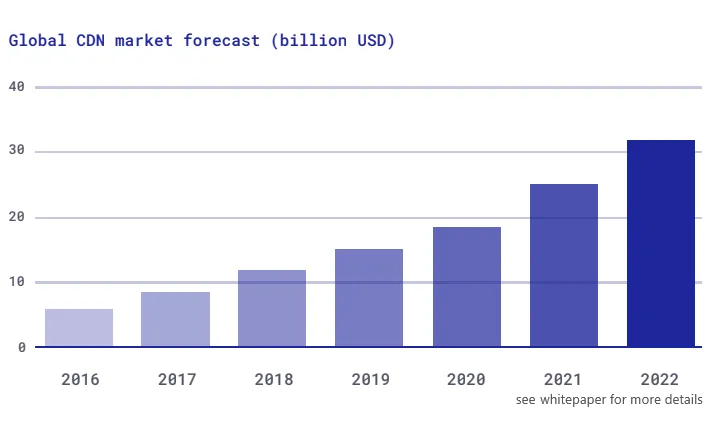
In 2017, Mahendra Ramsinghani of TechCrunch wrote about the changes rapidly occurring in the CDN market. Some of these technological shifts include:
- bloated web pages
- growth of video
- increasing mobile consumption
- optimization of outdated routing
- new applications
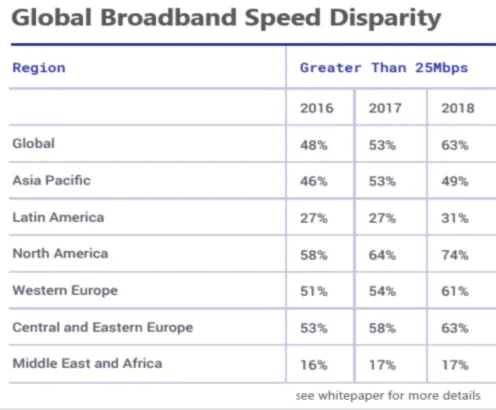
As factors become increasingly complicated and relationships mature, the CDN market desperately seeks a stable solution. Consider how dynamic microservices, continuous integration / delivery, and performance try to find a balance with security protocols. For some, a fragmented CDN environment requires them to go through multiple logins. An answer can be found by replacing centralization with decentralized integration.

In what specific ways can NOIA Network bring order to the CDN market?
Consider how CDNs are being driven by DevOps. Explain the role of NOIA’s blockchain innovation for the future of CDN development.

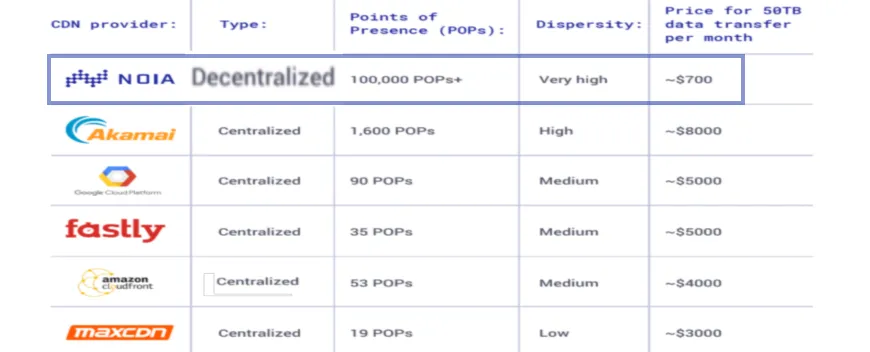
NOIA Network is the only practical decentralized solution within the CDN market. The advantages are clear.
NOIA is Ahead of the Innovation Curve
Salahuddin et. al. (2018) published A Survey on Content Placement Algorithms for Cloud-Based Content Delivery Networks in the Institute of Electrical and Electronics Engineers (IEEE). The paper discusses the operational cost incurred from pulling content from surrogate servers and billing. Below is a brief comparison of CDNs and CCDNs:
- CDNs:
- no operational costs
- billing is simply proportional to end-user traffic
- cloud-based content delivery networks (CCDN):
- operational costs are significant to the coordination of pulling content
- billing must account for operational costs
- solves the limitations of conventional CDNs (NOIA Network uses blockchain technology to overcome limitations) CCDNs improve scalability, reliability, security, and cost savings in some areas
- like the NOIA Network, are affordable for small businesses, yet applicable for large organizations
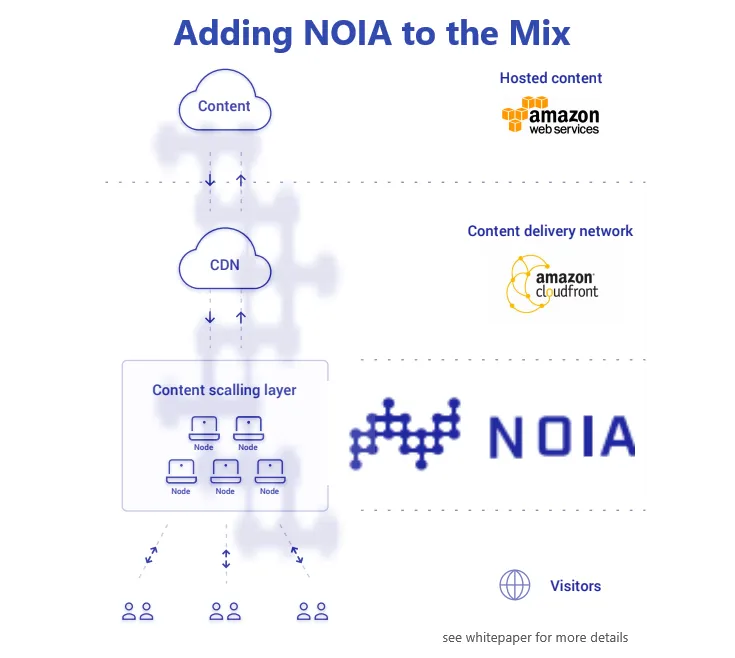
Some of the more innovative CCDNs are looking for ways to evolve beyond the inefficient algorithmic approaches of conventional centralized solutions for surrogate servers. Distributed pushbased CP algorithms is one example.
Becoming more evident is how the market recognizes the advantages of characteristically distributed technology. NOIA is clearly ahead in CDN innovation. This is because it utilizes the advantages of cryptographic technology fundamental to blockchains to provide a decentralized and distributed ledger solution.

Consider the currently chaotic CDN market. How might NOIA’s industry-disruptive (but accommodating) blockchain solution fit into content delivery innovation for the future?


Additional Information

NOIA's testnet is actively growing. Here is what it looked like on August 16, 2018.
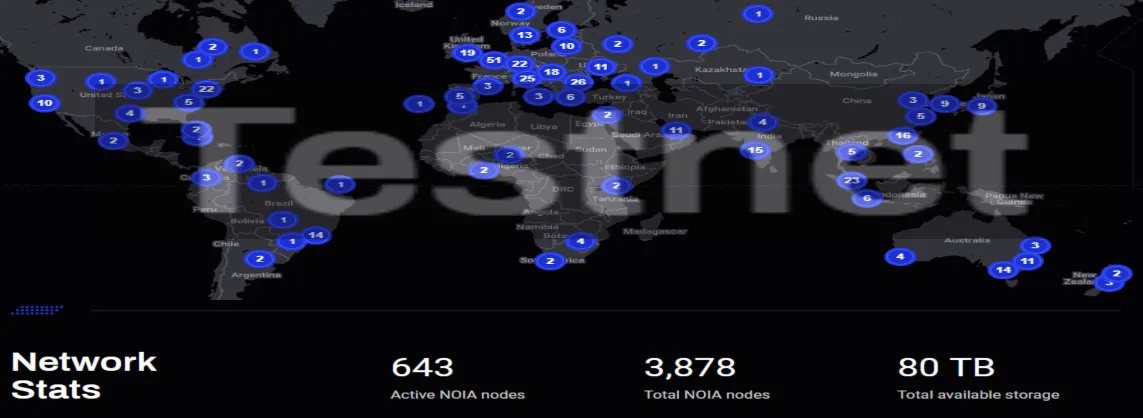
Read about NOIA 2.0.

The team at NOIA Network releases weekly video updates. Here is the introductory video:
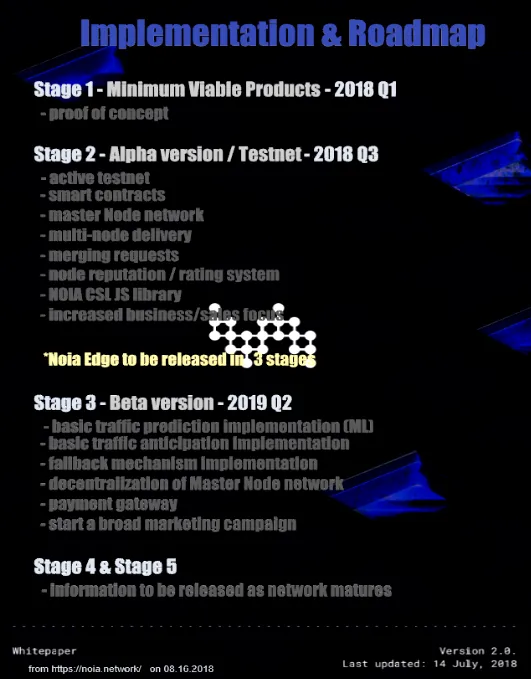
 NOIA Network website, where the whitepaper and technical paper can be found, except for the section entitled "Further Investigation".
NOIA Network website, where the whitepaper and technical paper can be found, except for the section entitled "Further Investigation".

